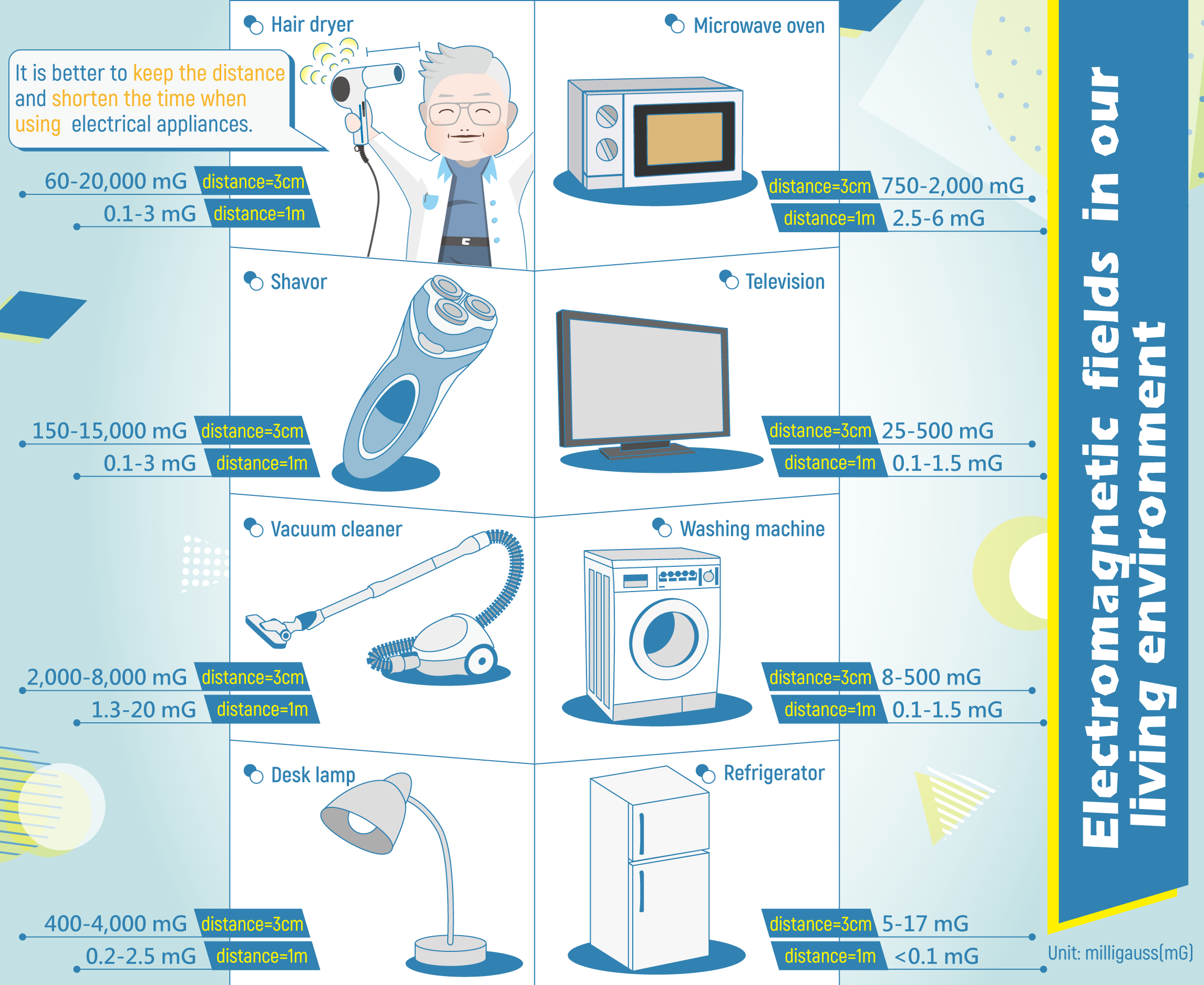- Last updated

"Electromagnetic waves" are energy produced by the interaction of electric and magnetic fields. It transmits at the speed of light in the form of waves and has existed in nature in various aspects since ancient times.
The difference between electromagnetic fields and electromagnetic waves: When talking about such issues in the media or the general public, they are often collectively referred to as "electromagnetic waves", and international research organizations have called them "electromagnetic fields." If you distinguish carefully, you can find the difference between electromagnetic fields and electromagnetic waves!

Non-ionizing radiation (NIR) means electromagnetic waves with the frequency range below 3 × 1015 Hz, Those commonly known as electromagnetic waves belong to this category. Its energy is quite weak that it cannot break the bonds of atoms and cause ionizations.
Ionizing radiation (IR) means electromagnetic waves with the frequency range above 3 × 1015 Hz. It is generally referred to as radiation. The best known ionizing radiation is X-ray. Its frequency is much higher than non-ionizing radiation, so hospital's X-ray rooms are shielded by lead plates to avoid radiation leakage.



In our living environment, there are electromagnetic waves everywhere. For example, all sorts of home electrical appliances that use electricity, radio stations used for communication, microwave base stations used for communication and daily sunlight are all sources of electromagnetic waves, and even the human body itself emits electromagnetic waves.
General artificial sources of non-ionizing radiation can be divided into two categories: radio frequency and extremely low frequency. Common sources of RF non-ionizing radiation include radio stations, television rebroadcasting stations, mobile phones, base stations and wireless networks (wi-fi). Extremely low frequency non-ionizing radiation sources are usually generated by a variety of electrical facilities and electrical equipment, such as transmission lines, transmission and distribution facilities, household electrical appliances.

There are many electrical appliances in our life, such as hair dryers, induction stoves, microwave ovens, televisions, washing machines, etc. The closer distances to electrical appliances, the higher level of exposure to electromagnetic fields.



